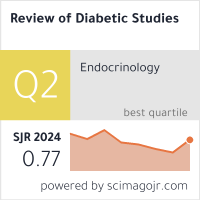Innovative Humanitarian Response Practices In Red Crescent Societies A Systematic Review (2020–2025)
DOI:
https://doi.org/10.70082/6mjk9a72Abstract
Background:
The past five years have witnessed profound transformations in humanitarian action, driven by climate-related crises, pandemics, and conflict. Within this evolving landscape, Red Crescent Societies have increasingly adopted innovative approaches to strengthen preparedness, efficiency, and community resilience. Yet, a systematic understanding of these emerging practices remains limited.
Objective:
This systematic review aims to identify, analyze, and synthesize evidence on innovative humanitarian response practices implemented by Red Crescent Societies between 2020 and 2025, focusing on how these innovations enhance timeliness, inclusivity, and sustainability in humanitarian operations.
Methods:
Following the PRISMA 2020 framework, a comprehensive search was conducted across Scopus, Web of Science, PubMed, ReliefWeb, IFRC Data Portal, and the Anticipation Hub. Studies were eligible if they documented innovative humanitarian interventions undertaken by Red Crescent Societies during 2020–2025. Data were extracted and appraised using the Mixed Methods Appraisal Tool (MMAT 2022) and narratively synthesized into four thematic domains: anticipatory and risk-informed financing, cash and voucher assistance (CVA), digital transformation, and community engagement and accountability (CEA).
Results:
Thirty-one studies met the inclusion criteria, representing 27 National Societies across the MENA, Asian, and African regions. Evidence shows that anticipatory action and forecast-based financing reduced response time by up to 60%, while digital cash transfers and mobile wallets improved reach and beneficiary dignity. Widespread digital adoption through IFRC GO and data governance toolkits enhanced operational coordination but also revealed gaps in IT capacity and cybersecurity. Integration of CEA and PGI frameworks fostered trust and community ownership, while MHPSS initiatives supported volunteer well-being during compound crises.
Conclusion:
Innovative humanitarian practices within the Red Crescent Movement reflect a shift from reactive relief toward anticipatory, data-driven, and human-centered response systems. To sustain these gains, National Societies must invest in local capacity building, ethical digital transformation, and integrated evaluation frameworks. Ultimately, innovation in this context is an expression of humanity — using technology and collaboration to deliver faster, fairer, and more dignified aid.
Downloads
Published
Issue
Section
License

This work is licensed under a Creative Commons Attribution-ShareAlike 4.0 International License.


